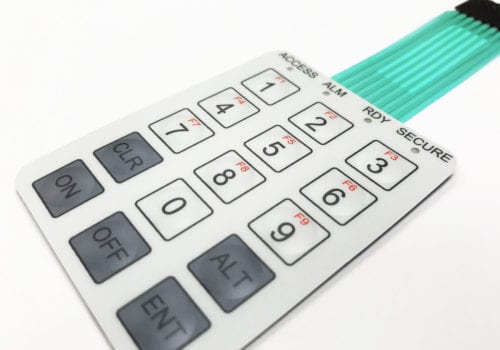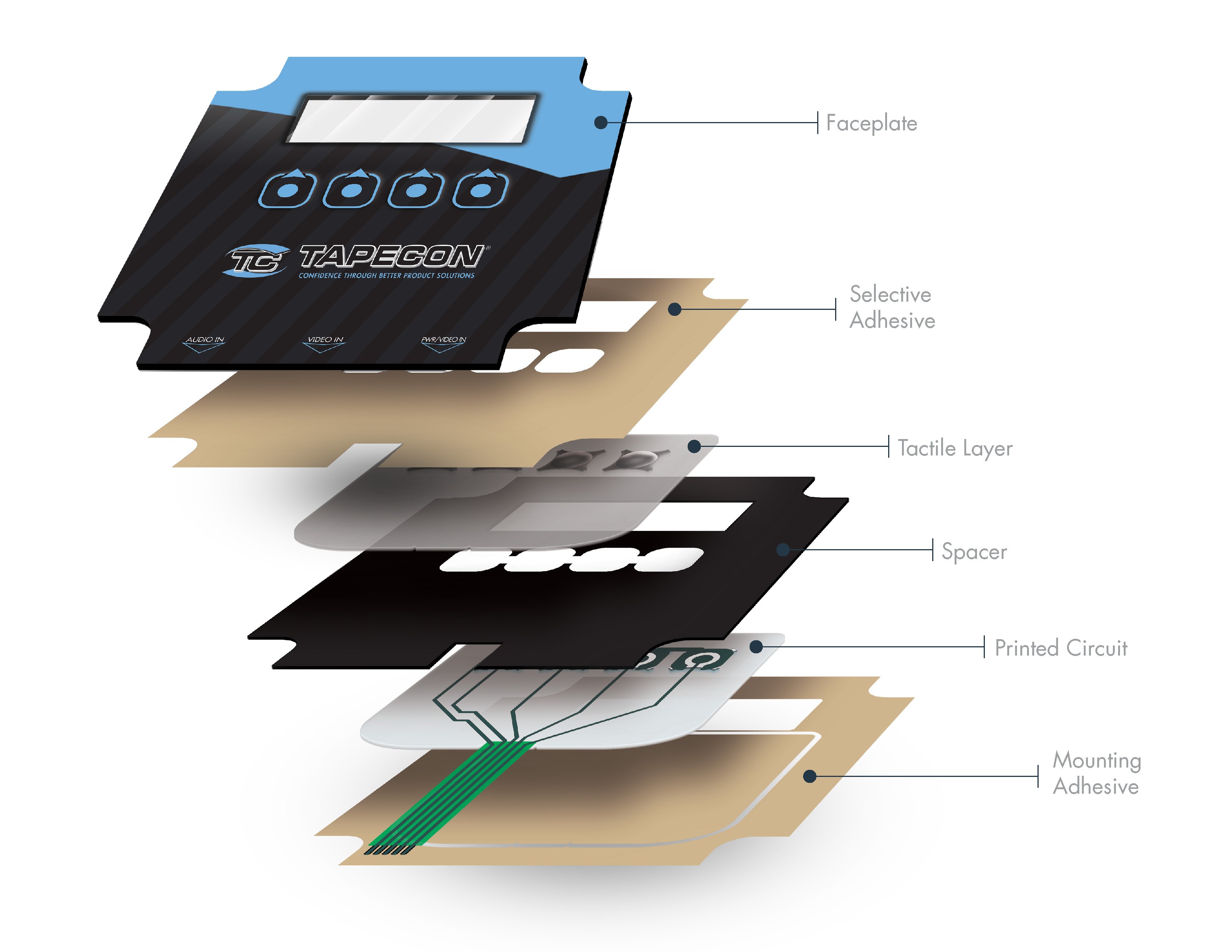Why Membrane Layer Switches Over Are Essential for Resilient Control Systems
Membrane buttons play a pivotal function in guaranteeing the sturdiness and dependability of control systems throughout numerous markets. As we explore the multifaceted benefits of membrane layer switches, it comes to be apparent that their relevance transcends plain functionality, affecting customer experience and operational efficiency.
Overview of Membrane Layer Buttons
Membrane switches are versatile and trustworthy parts generally made use of in various electronic control systems. The visuals overlay provides both functional and visual design, while the spacer layer makes sure that the buttons are triggered only when pressed.
Membrane switches are frequently preferred in applications needing a portable and lightweight design, making them optimal for handheld tools, medical devices, and industrial machinery. They can be customized to satisfy particular individual requirements and can include numerous functions such as backlighting, tactile feedback, and numerous shades. In addition, membrane layer buttons are immune to dirt, moisture, and pollutants, making them suitable for environments where toughness is important.
Advantages of Longevity
In lots of applications, the toughness of membrane layer switches over deals significant advantages that boost their overall performance and integrity. These switches are developed to hold up against severe environments, making them excellent for use sought after conditions such as high moisture, severe temperatures, and exposure to chemicals. Their robust construction aids to prevent damages from physical influence, ensuring long-lasting performance and minimizing the demand for frequent replacements.
In addition, membrane layer buttons are resistant to damage, which is essential in applications where regular interaction happens. This resilience converts to decrease upkeep expenses, as companies profit from reduced downtime and less solution disturbances. In addition, the encapsulated style of membrane layer switches over protects internal elements from dust and dampness ingress, additional adding to their life-span.
Another advantage is their capacity to preserve regular performance over time. With a high resistance for mechanical stress and anxiety, these buttons preserve their tactile responses and electric stability, making certain user satisfaction. Inevitably, the sturdiness of membrane switches over not just enhances operational performance yet likewise fosters self-confidence in their integrity, making them a preferred choice for control systems across different industries.
Applications in Numerous Industries
Durable control systems utilizing membrane layer buttons discover substantial applications across a range of markets, each gaining from the unique attributes these switches offer. In the clinical field, membrane layer switches are vital for gadgets such as person monitors and analysis tools, where reliability and simplicity of cleaning are critical. Their resistance to moisture and contaminants ensures they preserve functionality in clean and sterile atmospheres.
The automotive sector leverages membrane layer buttons for control panel controls and infotainment systems, where they offer streamlined, inconspicuous interfaces that improve customer experience. These buttons are likewise created to hold up against severe problems, including exposure to extreme temperature levels and vibrations.
In commercial setups, page membrane switches are generally utilized in equipment control board, providing responsive responses and sturdiness needed for high-usage applications. Their capability to withstand chemicals makes them appropriate for making environments where spills and pollutants are constant.

Customer electronic devices, such as cooking area devices and push-button controls, additionally make use of membrane layer buttons for their convenience and cost-effectiveness. Overall, the versatility and robust nature of membrane changes make them vital across different fields, making sure reliable operation and long life in control systems.
Design and Visual Appeal
While capability is extremely important, the style and visual charm More Info of control systems equipped with membrane buttons play an essential duty in user engagement and general experience (membrane switch). The aesthetic design of these switches can considerably influence individual perception and communication. A properly designed membrane layer button improves the appearance of the device, making it more appealing to users and fostering a link in between the user and the product
Membrane layer switches over offer a large amount of adaptability in layout, enabling producers to personalize graphics, colors, and textures to line up with brand name identity and Learn More product visual appeals. Using lively colors and unique patterns can draw focus, while responsive responses can enhance the user's communication with the device. Furthermore, the capacity to incorporate LED signs and backlighting into the membrane layer switch layout supplies both useful and aesthetic benefits, boosting exposure and use in numerous environments.

Enhancing Customer Experience

Additionally, membrane layer buttons can be personalized to include visual user interfaces, boosting use by offering information in a clear and intuitive manner (membrane switch). This customization can include icons, labels, and shade coding that overview individuals with complicated performances effortlessly. In addition, their versatility enables assimilation in numerous settings, making certain regular efficiency whether in commercial equipment or consumer electronics
The toughness of membrane layer switches likewise plays a crucial role in user experience. By holding up against rough problems and prolonged use, these buttons minimize the probability of system failures, thus advertising dependability and customer confidence. Ultimately, the calculated use membrane switches over not only elevates capability but additionally substantially enriches customer communication with control systems, making them an important component in contemporary style.
Conclusion
